

Remembering a Colleague, Classmate and Friend
New Memorial Symposium Honors the Legacy of a Young Alumnus
The Einstein Graduate Division of Biomedical Sciences and Alumni Association recently teamed with Regeneron Pharmaceuticals, Inc. to establish and host the inaugural David Heslin Memorial Ph.D. Alumni Symposium at Einstein. The all-day event was organized by friends and colleagues of Dr. Heslin, who earned his Ph.D. from Einstein in 2009, working in the lab of Dr. Jack Lenz. After graduating, Dr. Heslin was a molecular biology scientist in the VelociGene® department at Regeneron. VelociGene® is a proprietary technology platform designed to rapidly create genetic modifications in mice. Dr. Heslin died in 2014 after a battle with cancer, leaving a wife and three young children who attended the special memorial held at Einstein this summer.
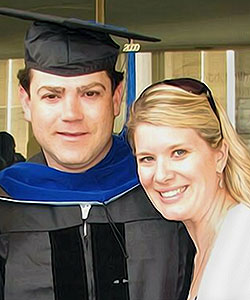
A portrait of Dr. Heslin with his wife, Kim, from his Einstein graduationDr. Heslin’s passion for science and his enthusiasm for engagement with other scientists led his friends and former classmates Drs. Joe Harrison (Ph.D. 2012) and Koenraad Van Doorslaer (Ph.D. 2011) to propose the idea for the memorial symposium. The duo worked with Dr. Arthee Jahangir, assistant director of career and professional development in the graduate division; Dr. Victoria Freedman, associate dean of the graduate division; and Einstein’s Ph.D. Alumni Panel to plan the symposium, which featured a career-development session with Einstein alumni in the morning, followed by scientific lectures related to Dr. Heslin’s work and a remembrance of Dr. Heslin in the afternoon.
Helpful Insights from Alumni’s Experience
The morning session, held in Lubin Dining Hall, featured more than a dozen Einstein Ph.D. alumni, who returned to their alma mater eager to share their perspectives about life and work after earning a Ph.D. They were organized into two panels whose members offered “academic” and “non-academic” perspectives to the Einstein graduate, M.D.-Ph.D. students and postdocs who took part.
Those alumni offering the academic perspective emphasized the importance of writing. “I feel like writing grants is my main job, and then I can do experiments in my spare time,” said Dr. Harrison.
Panel members also stressed the need for stellar organizational and time management skills, as well as the need to be sure of one’s decision to pursue an academic career. Many concurred that “being a postdoc is not necessarily the next logical step after a Ph.D.”
When asked “what do you wish you knew then that you know now?” the panelists noted the need to develop grant-writing experience, being able to navigate interpersonal politics and networking, and awareness of a wide variety of possible career paths.
Panel members whose career paths took them outside of academia represented fields including medical writing, patent law, finance, patient advocacy and program administration. These alumni discussed the importance of having good people and communication skills, being organized, and being able to present specific skills as broader capabilities. “As a scientist, you can do a lot more than just science, but you need to be able to communicate what that is,” observed Dr. Deb Aronson (Ph.D. 2012), who is now a medical communicator.
This group’s responses to the “what do you wish” question included the need to be skillful at networking and active listening, to develop persuasive writing skills and an awareness of how one’s other interests intersect with science.
Networking Opportunities
During lunch, a “speed networking” session offered interested Einstein graduate students and postdocs the opportunity to meet alumni who were grouped by profession.
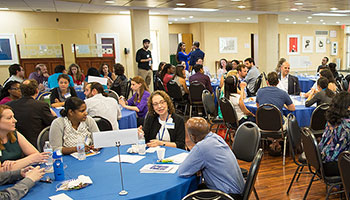
Ph.D. alumni and faculty members meet and chat with Einstein postdocs, graduate students and MSTP students, during a speed networking session held in the morning “The speed networking allowed us to have more detailed discussions about career advice, the alumni members’ experience, and networking,” enthused graduate student Arthur Ruiz. “It was really helpful seeing the variety of opportunities available to Ph.D.s, since I am actively exploring different possibilities after graduation.”
“Our aim with the panel sessions and networking was to provide ways that we graduates could share a little of the wisdom we’ve gained with current students, while re-connecting with former classmates—something that Dave would surely have enjoyed,” said Dr. Van Doorslaer.
Recalling a Classmate and Colleague
The afternoon portion of the symposium took place before a large crowd in the LeFrak Auditorium, at the Price Center/Block Research Pavilion, where the focus was on Dr. Heslin—both memories of him and highlights related to his scientific work. First, his former classmates offered their recollections of time spent with Dr. Heslin.
“Dave and I had lots of great times jamming on our guitars for a couple of hours and then talking about all kinds of science for several more,” recalled Dr. Harrison. “He was open and friendly to everyone he met, helping create a sense of camaraderie and continuity among senior and junior students.”
“Dave had an incredibly generous nature,” added Dr. Van Doorslaer. “On the day of my wedding, I realized I had forgotten to pack my dress shirt for the ceremony. As I was stressing about what to do, Dave calmly took off his jacket, removed his own shirt and offered it to me. What more can you say about a guy who literally gives you the shirt off his back?”
Many Degrees of Scientific Connection
To begin the scientific presentations, Dr. Lenz reflected on the importance of scientific traditions and the great continuum of science that Dr. Heslin contributed to, as well as the personal connection that he felt with his former student as a member of his laboratory family. He then summarized Dr. Heslin’s thesis work, which focused on endogenous retroviruses—the DNA sequences in human genomes that were originally part of infectious retroviruses, which become embedded within DNA of the infected organisms and are transmitted over generations of those organisms’ offspring.
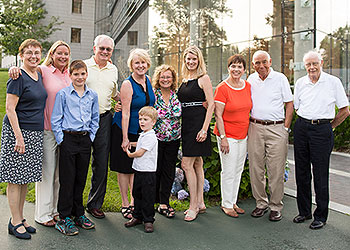
Members of Dr. Heslin’s family“Dave investigated the evolutionary aspects of the endogenous retrovirus HERV-K across millions of years of primate and human existence. He analyzed the integrity of the HERV-K DNA sequences in the human genome today, and elucidated how the proteins encoded by HERV-K genes normally function and how certain mutations have disrupted these functions, thereby inactivating these viruses in humans,” noted Dr. Lenz. He also described how he and Einstein colleagues found evidence of HERV-K infection in archaic humans, Neanderthals and Denisovans, and how continuation of this research is addressing the open question of whether the HERV-K sequences in humans today allow the virus to replicate and re-infect people.
Next, Dr. Stephen Goff, a Howard Hughes Medical Institute investigator and pre-eminent scientist working in the field of retroviruses at Columbia University, discussed his laboratory’s research on how silencing of retroviral DNA occurs in embryonic stem cells. He put Dr. Heslin’s work in context with the larger picture of the human-pathogen arms race, creating a fascinating picture of millions of years of viral genomes colliding with and invading our own. Dr. Goff’s research has identified molecular mechanisms by which humans and other hosts wrestle with controlling these invaders.
The symposium continued with several of Dave’s Regeneron colleagues offering heartfelt, touching and often amusing anecdotes about him. They described his warm, gentle, supportive, optimistic spirit, as well as his outgoing and entertaining interactions with many people.
Three members of Regeneron’s leadership then rounded out the afternoon’s presentations. Dr. Venus Lai, executive director of the VelociGene® project on which Dr. Heslin worked, described the high-throughput, high-speed genome engineering system they have developed to rapidly create mice with gene knockouts and other types of mutations. Remarkably, “we were able to reduce the turnaround time to generate mutant mice from one year to approximately three months. Dave was an important contributor to this substantial effort by Regeneron’s scientists that is yielding impactful insights about many genes.”
Dr. Aris Economides, executive director of bone cartilage & genomic technology at Regeneron, then discussed the company’s work on fibrodysplasia ossificans progressiva (FOP), a rare genetic disorder that results in small growths of osteocytes (bone cells) in areas of immune inflammatory activation, resulting in severe reductions in joint mobility and eventual death. Using the VelociGene® platform, Regeneron scientists were quickly able to generate mice carrying a human, FOP-causing mutation in the Acvr1 receptor gene, to clarify how inflammation then aberrantly triggers bone formation through signaling by a molecule called activin and to rapidly develop antibody-based inhibitors of that signaling as a potential therapy for this horrific disease.
To conclude the scientific focus, Dr. George Yancopoulos, founding scientist, chief scientific officer and president of Regeneron Laboratories, presented an overview of the company’s approach to taking a project from scientific discovery to pharmaceutical development and production, and then onward through clinical trials to licensing. He lauded the contributions of the entire Regeneron team, including Dave, to Regeneron’s emergence as a pharmaceutical industry leader. He expressed his appreciation for the outpouring of affection for Dr. Heslin by colleagues and friends. To him, and to all who attended, it was evident that David Heslin touched deeply those who knew him.
Dr. Yancopoulos noted, “If what we have in life is measured by what we leave behind, David Heslin has clearly left a legacy of love and respect that will resonate throughout the lives of his friends, colleagues and family.”
Photo Gallery
(To view slideshow of photo gallery, click on an image below; then move your mouse over the left or right margins to navigate.)
Posted on: Wednesday, October 28, 2015

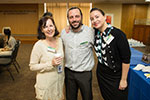
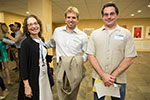
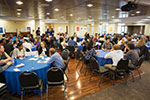
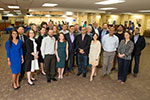
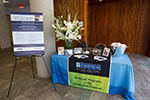
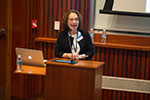
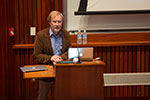
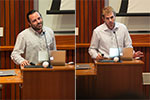
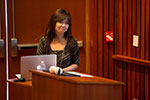
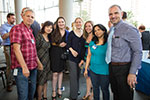
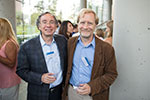
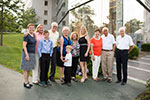
Tablet Blog